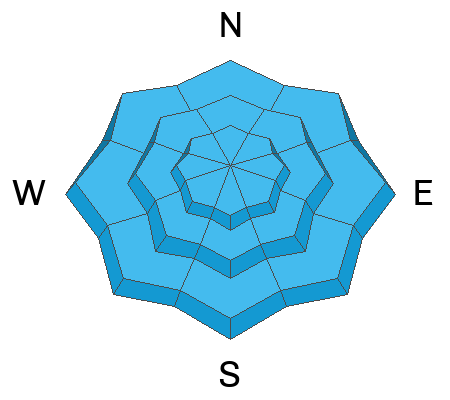Forecast for the Moab Area Mountains

Saturday morning, December 27, 2025



Geyser Pass Road Conditions: The road is a mix of dry dirt down low with sections of packed snow and ice up high. All wheel drive and good tires are recommended.
Grooming: Trails were last groomed on Saturday.
Friday, January 30 - Saturday, January 31 - Moab Backcountry 101 Class - Our annual local backcountry avalanche class. Click here for information and registration. Moab and Monticello locals can use the discount code MOAB-LOCAL for a 10% discount.
24 Hour Snow: 0" 72 Hour Snow: 1" Season Total Snow: 22" Depth at Gold Basin: 11"
Winds on Pre-Laurel Peak: N/A Temp: 28° F
Weather
Under broken skies, it is 28°F in Gold Basin this morning. Nearby wind stations show moderate winds out of the southwest with strong gusts. Daytime highs will reach 30°F, and winds will blow out of the southwest 15-20 MPH with gusts up to 30 MPH. Light snowfall is expected today, with the best chance for snow occurring late this afternoon. We should pick up 3-5 inches of new snow by Sunday morning. A very cold air mass arrives around midnight, and temperatures will crater to the single digits. Winds will shift and blow out of the northwest. Sunday morning will feel very cold with wind chill values around -10°F. Skies will clear out on Sunday, and temperatures will slowly warm up into the start of next week.
General Conditions
I traveled out to Colorado Bowl yesterday, mostly to see what sort of damage Thursday's rain did to our snowpack. I won't sugarcoat it; the skiing is about as bad as it gets right now. My suggestion is to wait until tomorrow, and hopefully, we will get some new snow on top of the rain crusts that exist on all aspects and elevations as high as 11,400 feet. We still don't have any avalanche problems to speak of this morning. If today's storm outperforms the forecast, we could develop shallow soft slabs of wind-drifted snow near and above treeline by the end of today. Depending on what happens tonight, we may wake up to a moderate danger for wind slabs up high.
I discuss the newly formed rain crust in this video below
Snowpack and Weather Data
NEW! Gold Basin webcam storm stake
Gold Basin Storm Stake (10,000')

Normal caution is not an "anything goes" situation. With a storm on our doorstep today, backcountry travelers should be alert to changing conditions. If you experience heavy snowfall (more than one inch per hour) and strong winds, expect shallow soft slabs of wind-drifted snow to form on leeward slopes near treeline and above. Be on the lookout for smooth, round-looking pillows of freshly drifted snow. These drifts are stiffer and more compact than storm snow. Shooting cracks are a sure sign of instability.